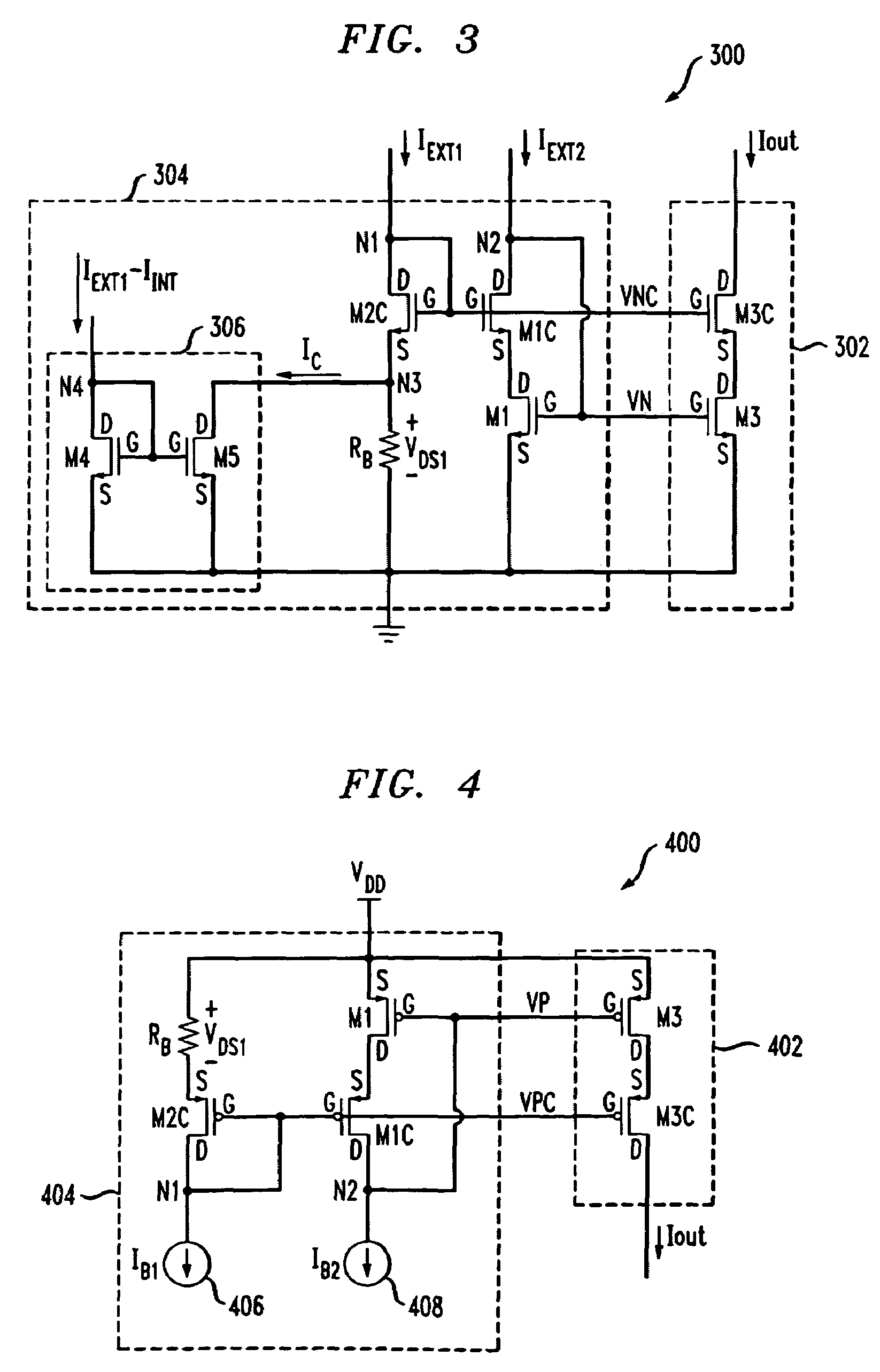Bias circuit for high-swing cascode current mirrors
a bias circuit and cascode current mirror technology, applied in the field of electromechanical circuits, can solve the problems of not being able to tolerate as large of the output voltage swing, more voltage headroom to operate properly, and most cascode current mirrors are not suitable for use in a low-voltage power supply environmen
- Summary
- Abstract
- Description
- Claims
- Application Information
AI Technical Summary
Problems solved by technology
Method used
Image
Examples
Embodiment Construction
[0013]The present invention will be described herein in the context of illustrative bias circuits. It should be understood, however, that the present invention is not limited to these or any particular circuit arrangements. Rather, the invention is more generally applicable to techniques for generating cascode bias voltages for biasing high-swing cascode current sources and / or current sinks. Although implementations of the present invention are described herein with specific reference to p-channel metal-oxide-semiconductor (PMOS) and n-channel metal-oxide-semiconductor (NMOS) transistor devices, as may be formed using a complementary metal-oxide-semiconductor (CMOS) fabrication process, it is to be understood that the invention is not limited to such transistor devices and / or such a fabrication process, and that other suitable devices, such as, for example, bipolar junction transistors (BJTs), etc., and / or fabrication processes (e.g., bipolar, BiCMOS, etc.), may be similarly employe...
PUM
 Login to View More
Login to View More Abstract
Description
Claims
Application Information
 Login to View More
Login to View More - R&D
- Intellectual Property
- Life Sciences
- Materials
- Tech Scout
- Unparalleled Data Quality
- Higher Quality Content
- 60% Fewer Hallucinations
Browse by: Latest US Patents, China's latest patents, Technical Efficacy Thesaurus, Application Domain, Technology Topic, Popular Technical Reports.
© 2025 PatSnap. All rights reserved.Legal|Privacy policy|Modern Slavery Act Transparency Statement|Sitemap|About US| Contact US: help@patsnap.com



